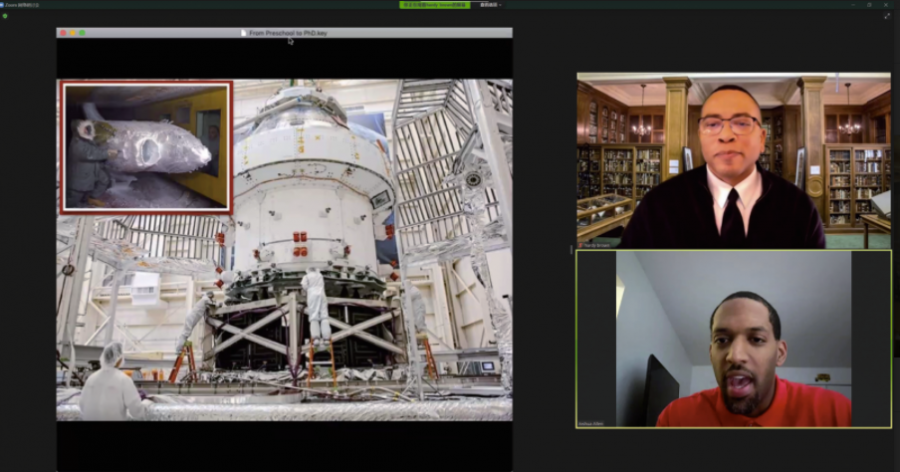Historian highlights Black history
For years, historian Hardy Brown has dedicated his time to sharing with others the struggles of people whose skin color meant more to society than their character. On Feb. 10, he shared this history with Diamond Bar High School students in the first of three virtual lectures, “Historical Empathy, Foot Steps to Freedom.”
Last February, Brown visited the campus with his mobile museum to share a message of historical empathy with the student body, delivering interactive presentations to English, history and journalism classes as well as some DBHS faculty. Brown is also a familiar sight for members of the DBHS Black Student Union, who visited one of his exhibits off-campus in 2018.
In this year’s virtual presentation, Brown featured the Gore Collection, which consists of artifacts ranging from historical documents to shackles used on the enslaved. Historian Jerry Gore curated this collection to help people achieve a greater understanding of those that were subjected to injustices. After Gore’s passing, the collection was passed down to the Brown family’s nonprofit organization known as the Black Voice Foundation.
Pictures of the artifacts were shown while Brown delivered a live lecture explaining the history behind each item.
Throughout his presentation, Brown recounted several stories not just of long-forgotten historical figures, but even some pertaining to his own family and their past in America. He explained that he shares such stories with the intent to immerse people into the perspectives of those who have faced such hardships, and hopes for them to view these figures of the past not just as slaves, but as people who were enslaved.
Within five generations, Brown’s family went from being enslaved and therefore legally prohibited from learning to read or write, to gaining the highest form of education America has to offer.
“These are five siblings, eight degrees, four HBCUs, one Ph.D., one professor, attorney, eye doctor, engineer, educator all in one family,” Brown said. “That is the power of us having the resilience and knowing we can make it through any other time.”
HBCUs is the acronym for historically black colleges and universities. They were established before the Civil Rights Act of 1964 to primarily serve the African American community, but their diversity has increased over time.
“I have never hid from my kids the fact that I wasn’t a good high school student. But in life, I turned around and became a scholar later on,” Brown said. “I don’t hide that from them because I want them to know that it’s okay to fall, but you can be resilient and get up.”
The story of resilience is continued in his second lecture, Brown invited one of his former students from a HBCU, Joshua Allen, an award-winning computer engineer at NASA. Allen was one of the founding engineers of a multi-million dollar data system used by NASA
This NASA engineer graduated high school with a 2.4 GPA and was diagnosed with attention deficit disorder. He only found out about his passion for engineering in college after he suffered an injury that made him give up on a basketball career.
“I had no idea what I wanted to do out of high school. It took a lot of time and many mistakes for me to figure out my strengths, my weaknesses and my skills,” Allen said. “And remember, you only need one skill to be successful. Skills are what’s going to separate you from everybody else”
He said he hopes to inspire others with his journey, which defines him.
Throughout the lecture, Brown challenged his listeners to consider a sincere question about themselves and their futures.
“What do you want history to say about you?” Brown said. “I don’t care which side you choose. But understand that there are so many people’s lives that you can impact and make a difference.”
Your donation will support the student journalists of Diamond Bar High School. Your contribution will allow us to purchase equipment and cover our annual website hosting costs.









